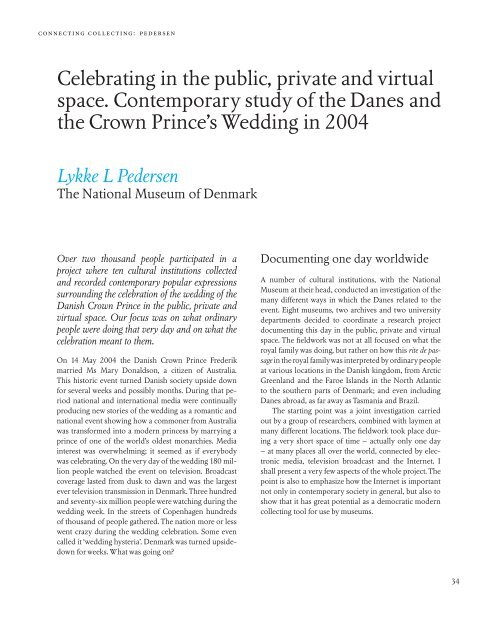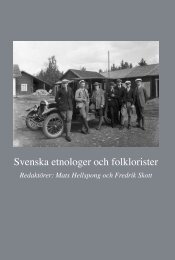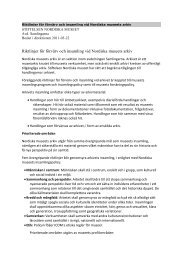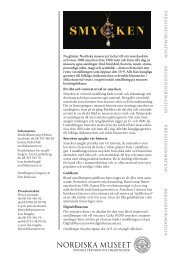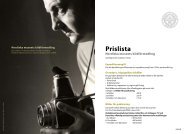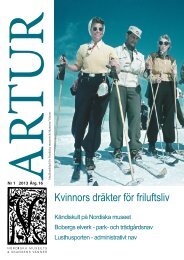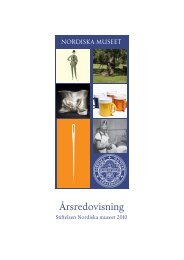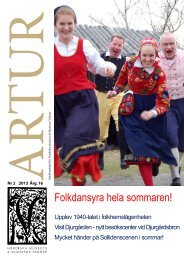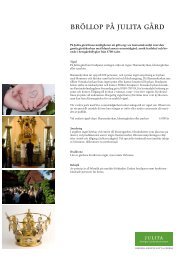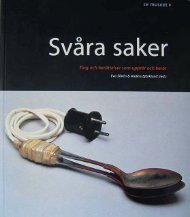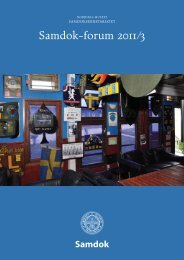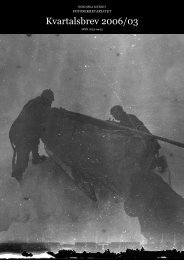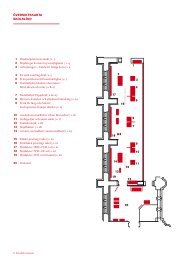Samdok - Nordiska museet
Samdok - Nordiska museet
Samdok - Nordiska museet
You also want an ePaper? Increase the reach of your titles
YUMPU automatically turns print PDFs into web optimized ePapers that Google loves.
connecting collecting: pedersen<br />
Celebrating in the public, private and virtual<br />
space. Contemporary study of the Danes and<br />
the Crown Prince’s Wedding in 2004<br />
Lykke L Pedersen<br />
The National Museum of Denmark<br />
Over two thousand people participated in a<br />
project where ten cultural institutions collected<br />
and recorded contemporary popular expressions<br />
surrounding the celebration of the wedding of the<br />
Danish Crown Prince in the public, private and<br />
virtual space. Our focus was on what ordinary<br />
people were doing that very day and on what the<br />
celebration meant to them.<br />
On 14 May 2004 the Danish Crown Prince Frederik<br />
married Ms Mary Donaldson, a citizen of Australia.<br />
This historic event turned Danish society upside down<br />
for several weeks and possibly months. During that period<br />
national and international media were continually<br />
producing new stories of the wedding as a romantic and<br />
national event showing how a commoner from Australia<br />
was transformed into a modern princess by marrying a<br />
prince of one of the world’s oldest monarchies. Media<br />
interest was overwhelming; it seemed as if everybody<br />
was celebrating. On the very day of the wedding 180 million<br />
people watched the event on television. Broadcast<br />
coverage lasted from dusk to dawn and was the largest<br />
ever television transmission in Denmark. Three hundred<br />
and seventy-six million people were watching during the<br />
wedding week. In the streets of Copenhagen hundreds<br />
of thousand of people gathered. The nation more or less<br />
went crazy during the wedding celebration. Some even<br />
called it ‘wedding hysteria’. Denmark was turned upsidedown<br />
for weeks. What was going on?<br />
Documenting one day worldwide<br />
A number of cultural institutions, with the National<br />
Museum at their head, conducted an investigation of the<br />
many different ways in which the Danes related to the<br />
event. Eight museums, two archives and two university<br />
departments decided to coordinate a research project<br />
documenting this day in the public, private and virtual<br />
space. The fieldwork was not at all focused on what the<br />
royal family was doing, but rather on how this rite de passage<br />
in the royal family was interpreted by ordinary people<br />
at various locations in the Danish kingdom, from Arctic<br />
Greenland and the Faroe Islands in the North Atlantic<br />
to the southern parts of Denmark; and even including<br />
Danes abroad, as far away as Tasmania and Brazil.<br />
The starting point was a joint investigation carried<br />
out by a group of researchers, combined with laymen at<br />
many different locations. The fieldwork took place during<br />
a very short space of time – actually only one day<br />
– at many places all over the world, connected by electronic<br />
media, television broadcast and the Internet. I<br />
shall present a very few aspects of the whole project. The<br />
point is also to emphasize how the Internet is important<br />
not only in contemporary society in general, but also to<br />
show that it has great potential as a democratic modern<br />
collecting tool for use by museums.<br />
34


